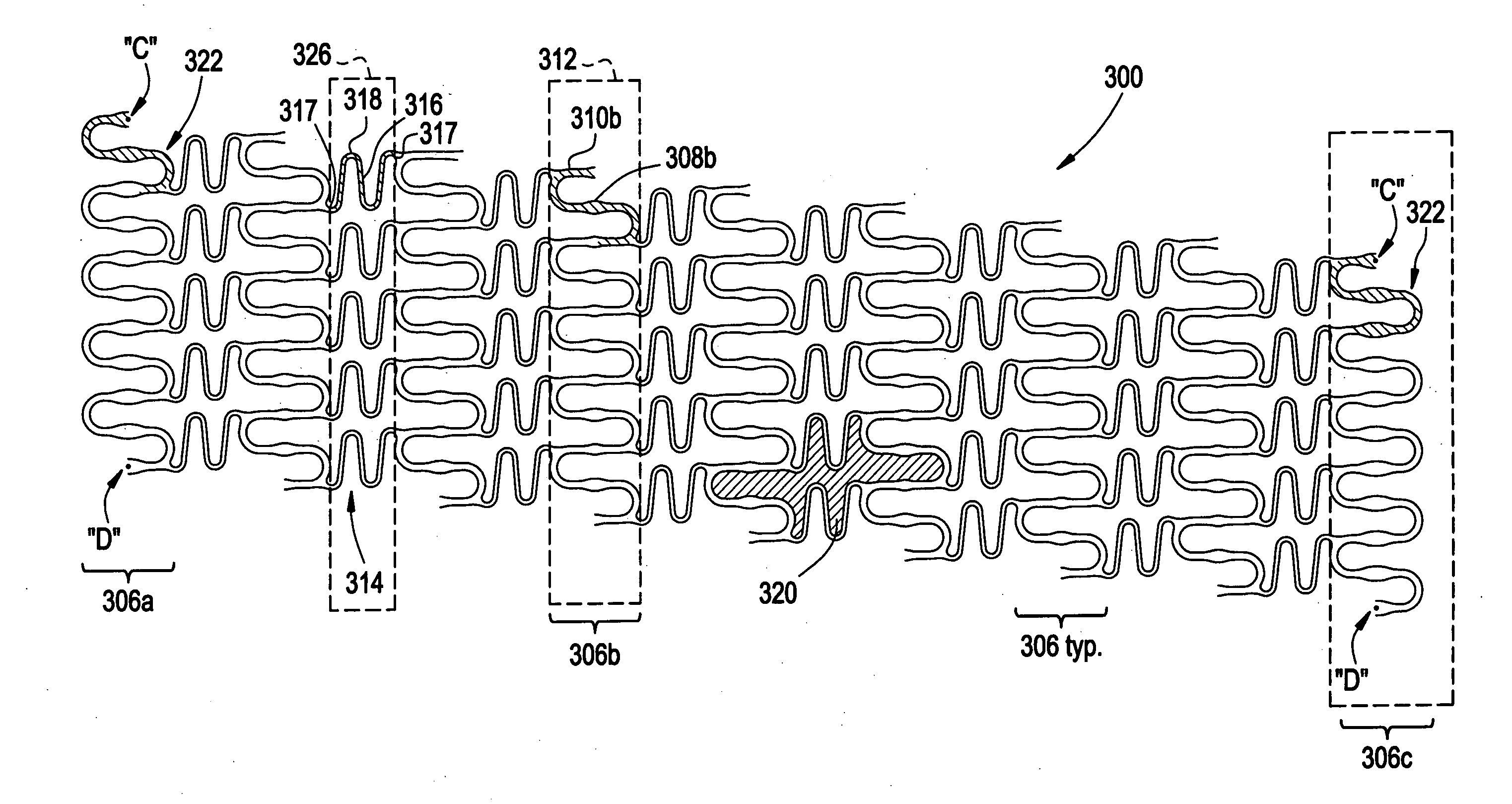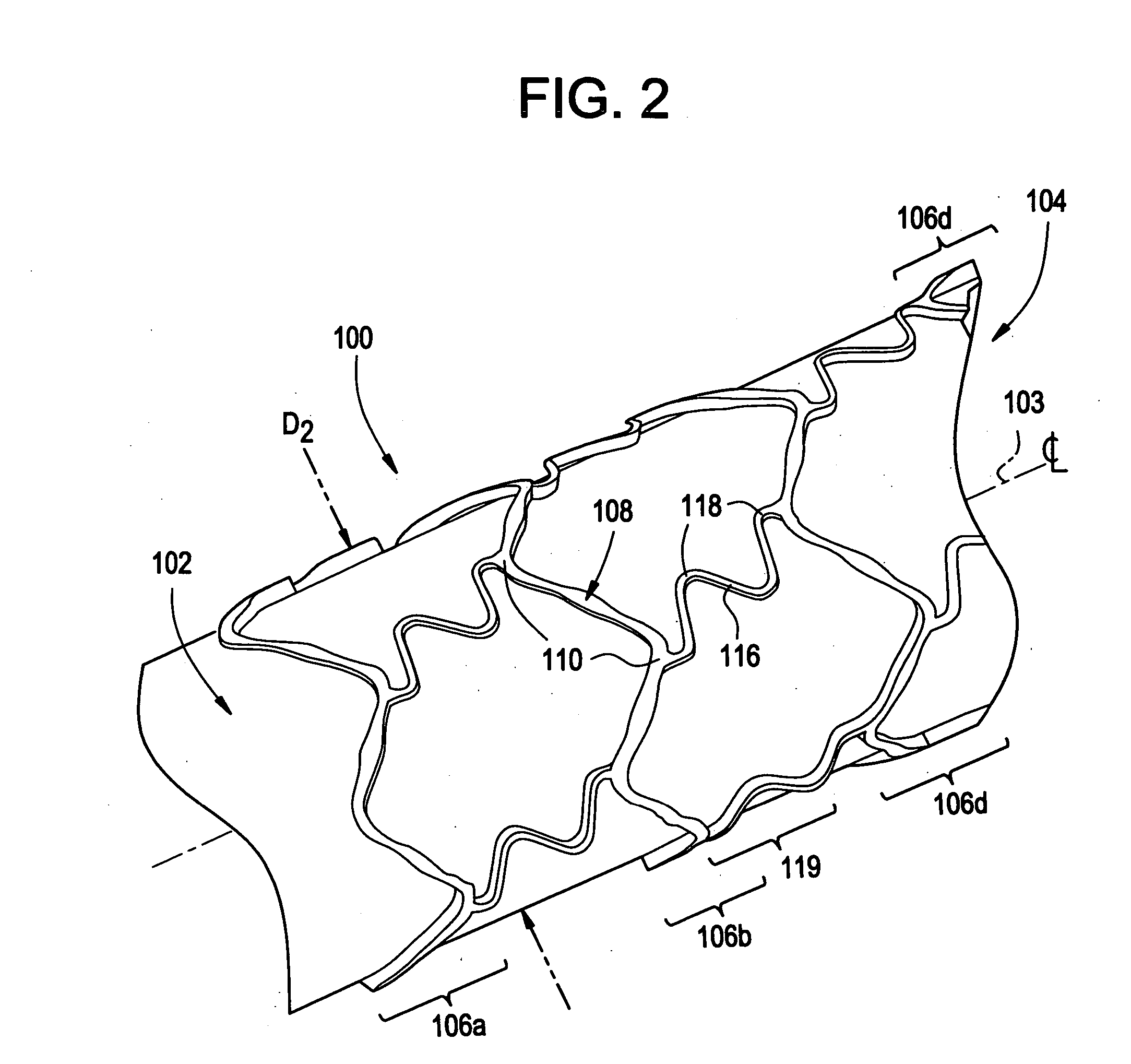Intraluminal medical device having asymetrical members
a technology of asymetrical members and medical devices, which is applied in the field of expandable intraluminal medical devices, can solve the problems of stiffer stents, high experienced loading of radial arc members compared to the rest of the structure, and strain experienced by each member under load
- Summary
- Abstract
- Description
- Claims
- Application Information
AI Technical Summary
Benefits of technology
Problems solved by technology
Method used
Image
Examples
Embodiment Construction
[0037] The present invention describes an intraluminal medical device that is capable of expanding into the wall of a vessel lumen and physiological loading, while maintaining near uniform stress (uniform fatigue safety factor) and / or strain in one or more of the device components during use. For the purpose of this description, “use” may include the delivery, deployment and post deployment (short and long term) state of the device. An intravascular stent will be described for the purpose of example. However, as the term is used herein, intraluminal medical device includes but is not limited to any expandable intravascular prosthesis, expandable intraluminal vascular graft, stent, or any other mechanical scaffolding device used to maintain or expand a body passageway. Further, in this regard, the term “body passageway” encompasses any duct within a mammalian's body, or any body vessel including but not limited to any vein, artery, duct, vessel, passageway, trachea, ureters, esophagu...
PUM
 Login to View More
Login to View More Abstract
Description
Claims
Application Information
 Login to View More
Login to View More - R&D
- Intellectual Property
- Life Sciences
- Materials
- Tech Scout
- Unparalleled Data Quality
- Higher Quality Content
- 60% Fewer Hallucinations
Browse by: Latest US Patents, China's latest patents, Technical Efficacy Thesaurus, Application Domain, Technology Topic, Popular Technical Reports.
© 2025 PatSnap. All rights reserved.Legal|Privacy policy|Modern Slavery Act Transparency Statement|Sitemap|About US| Contact US: help@patsnap.com



